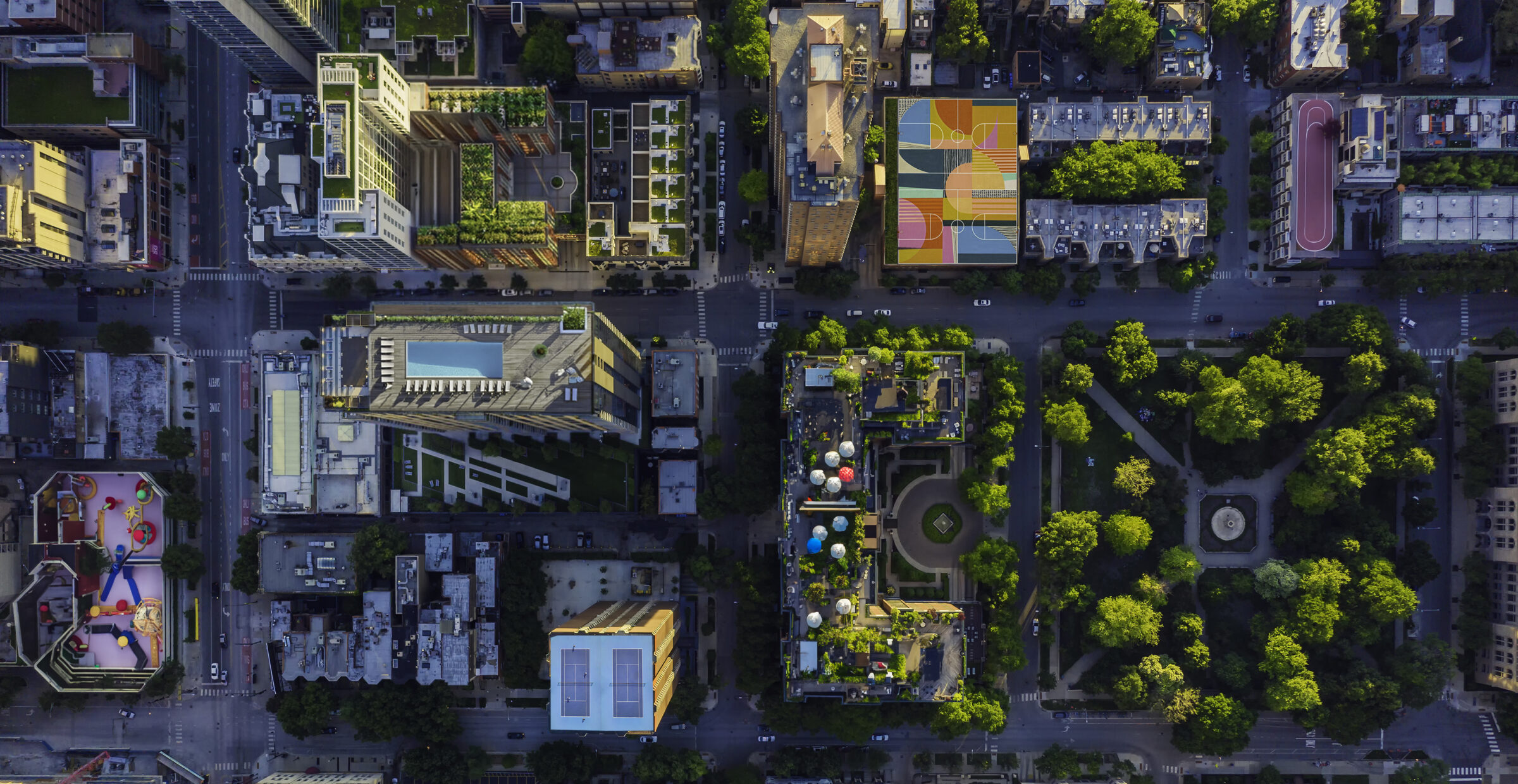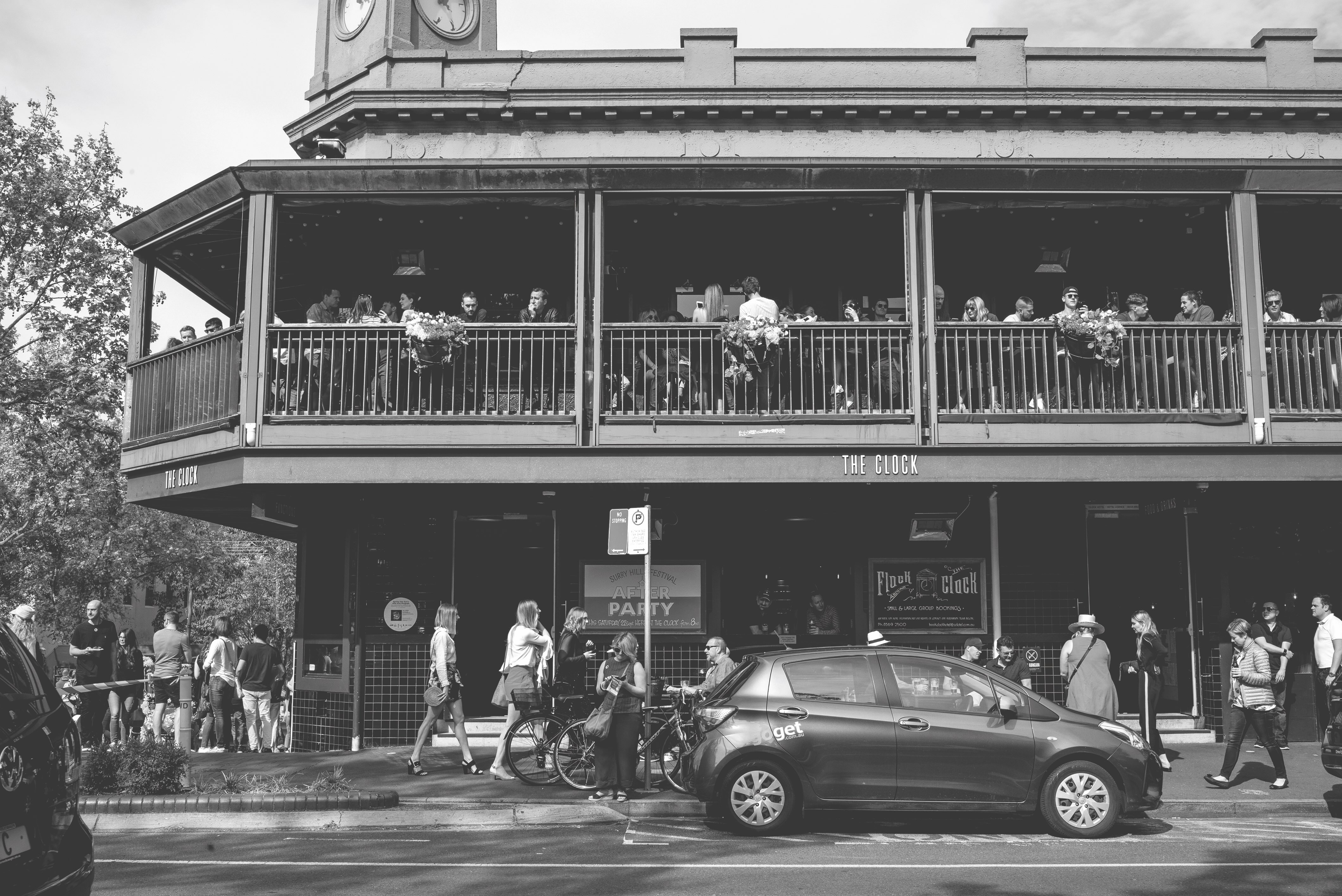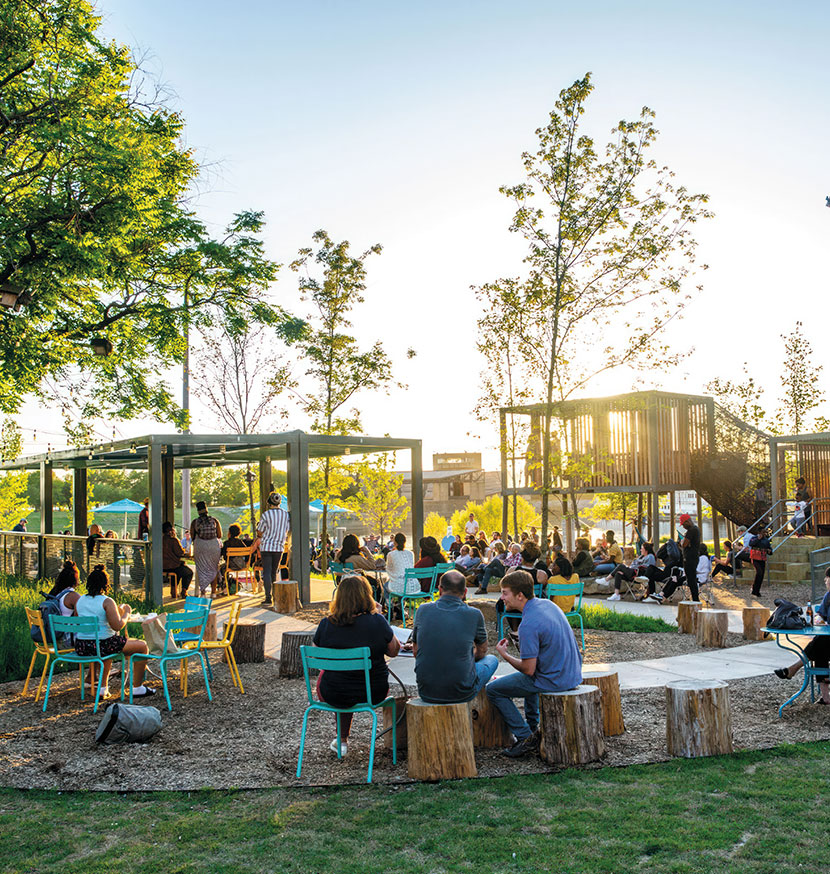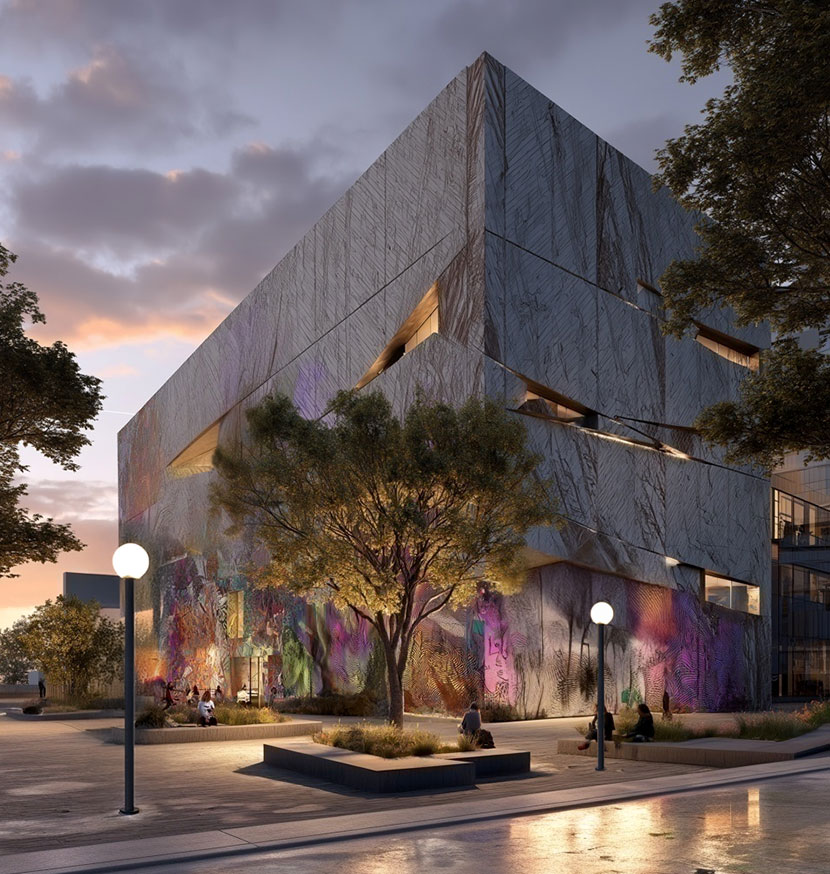
Rooftops: Australia’s front door to connection, commerce and community
Look up. Rooftops are no longer dead space, they’re the next frontier for connection, commerce and community. From gardens to gyms to open-air cinemas, activated rooftops boost value, vibrancy and tenant appeal.
A third of our cities’ surfaces are wasted – and it’s all sitting above our heads. Rooftops used to be dead space, home to HVAC units, bird droppings, maybe a satellite dish or two. But that mindset no longer stacks up. If you own or manage a commercial or mixed-use building and you’re not thinking about how to unlock your rooftop, you’re missing one of the easiest, most powerful ways to add value, stand out, and create something people actually want to be part of.
Right now, your rooftop is one of the smartest places to invest – for returns, reputation, and relevance. It’s time to think of rooftops as part of your buildings brand and experience offer.
Across the globe, progressive landlords are activating rooftops in more sophisticated and ambitious ways than just planting shrubs and ticking sustainability boxes. We’re talking bars, breakout zones, basketball courts, open-air cinemas, rooftop co-working, community kitchens, and wellness studios. These spaces don’t just make a building more interesting, they fundamentally shift how people use it, how long they stay, and how much they’re willing to pay.
People want flexible, welcoming spaces with access to natural light, fresh air, and places to gather that aren’t confined to foyers. They want somewhere to take a call, take a breath, or take their team for a drink. That’s what activated rooftops offer. And here’s the kicker: tenants are willing to pay for it. Well-designed rooftop spaces help landlords achieve higher rents, stronger tenant retention and improved occupancy. In today’s market, it’s not just about square metres, it’s about experience. Add energy-efficient infrastructure, and you’re also reducing costs and boosting ESG performance.
Of course, rooftop space often has to work hard, especially in commercial buildings where air conditioning units and plant equipment are essential. But that’s not a reason to give up. it’s a reason to plan smarter, integrating amenities alongside essential services.
Publicly accessible versus communal rooftops
One of the most important distinctions in rooftop design is between publicly accessible and communal spaces. Publicly accessible rooftops are open to anyone, allowing the general public to enjoy the facilities. Communal rooftops, by contrast, are reserved for residents or tenants of the building. Both types should be pursued wherever feasible, particularly in commercial workplaces, where we are exploring ways to encourage people to return to and stay in the office. Ideas being considered include making office buildings more hotel-like in terms of amenity and experience.
Context is everything
It’s also critical to consider the local context of each building. Buildings vary greatly in terms of location and the needs of the surrounding community. For instance, in a densely built urban area with little greenery, providing more public space may be essential, so a basketball court could be a natural rooftop choice. In a residential setting, particularly for older or retired residents, a garden space might be more appropriate. In office environments, rooftop pods and gazebos for work breakout, while industrial or business parks – often located outside inner-city areas and lacking infrastructure – could benefit enormously from rooftop amenities such as a five-a-side football pitch or a gym.
What’s stopping us? Excuses, mostly
In Australia, the number of truly activated rooftops is embarrassingly low, especially when compared to places like New York, Singapore and Bangkok. Is that because we lack the space or imagination, or is it because we talk ourselves out of it before we even start?
One of the key barriers is that we don’t distinguish enough between existing buildings and new developments. Yet we should. Existing buildings are the big opportunity – they’re ready to be adapted, reimagined and put to better use right now. Waiting for new builds to save the day misses the urgent and vast potential of retrofitting what’s already here.
Let’s also unpack the two most common blockers I hear day-to-day:
- “Lift access and security make it too hard.”
Sure, getting people safely and easily to the top of your building after hours isn’t always simple. But other cities solve it with smart lift programming, dedicated rooftop access, concierge coordination, and tech-based security. The costs are real, but so are the returns. We need to stop seeing it as an imposition and start seeing it as a smart investment. - “It won’t be DDA compliant, so better not do it at all.”
Accessibility matters, always. But perfection shouldn’t be the enemy of progress. Better to enable 95% of people to use it, than 0%. With a clear, staged approach, many existing buildings could potentially improve accessibility over time. Planning policies should encourage that, not scare developers into inaction. If we can provide rebates for solar, we can offer the same support for making rooftops more accessible and usable for the people who can access it. It’s about leadership and intent.
A trend versus infrastructure
We need to start treating rooftop space as part of the social and cultural infrastructure of a building. It’s not a “nice-to-have” but a vital opportunity to bring vibrancy, personality and connection into vertical environments.
This is especially important in denser suburbs or city-fringe developments, where land for parks or plazas is scarce. Rooftops can become the community’s third place – the spot between work and home where people meet, relax, exercise, and stretch their arms.
Think:
- Rooftop sports courts in build-to-rent communities
- Publicly accessible terraces atop libraries and civic buildings
- Rooftop reading gardens or artist studios in high-density areas
- Community kitchens and open-air dining zones in multicultural precincts
- Family-friendly sky playgrounds in residential towers
We’ve seen it work at South Eveleigh, NSW, where a rooftop community garden supports tenants and the public through food programs and First Nations education. At 167 Green Street in Chicago, a 17th-floor “amenity penthouse” offers shared dining, lounging, and garden space with skyline views. The White Collar Factory in London added a rooftop running track and meeting terrace, and it’s now one of the area’s most desirable workspaces. None of this is accidental. It’s design-led and commercially smart.
Momentum is building in Australia
To make rooftop activation easier and more common, we need to shift the system.
Here’s where we start:
- Incentivise lift access upgrades through Floor Space Ratio bonuses, ESG grants, or fast-tracked approvals
- Support staged accessibility for existing buildings through updated guidance and funding
- Accept that some existing rooftops on old buildings will never be fully accessible for the disabled, and accept that as a reality.
- Mandate rooftop amenity targets in new developments, especially in dense areas
- Allow rooftop programming to count toward public realm or community benefit metrics
- Enable third-party partnerships with cultural groups, operators, and creatives to bring rooftops to life and manage operations
Positive change is already underway. Brisbane City Council is championing rooftop transformation, progressing amendments to the City Plan 2014 to promote rooftop gardens and landscaped greenspace in centre zones and mixed-use developments.
Meanwhile, Sydney could soon see its skyline transformed. The NSW Productivity Commission has recommended that the state government pilot a “rooftop activation” trial in Special Entertainment Precincts and business zones with low residential impact, such as the YCK Laneways in the CBD. By cutting red tape, this initiative could unlock bars, clubs, and communal spaces, showcasing the untapped potential of urban rooftops and setting a precedent for other Australian cities.
The sky’s not the limit – it’s the next move
We’re running out of room on the ground. That’s not news. But we’re sitting on thousands of square metres of usable space and ignoring it because it’s a bit tricky or too difficult for council to get their head around. Rooftops are a business strategy, a placemaking opportunity, and a way to make our cities more human, one level at a time. If you’re not using yours, you’re not just missing out – you’re falling behind.
REAL-WORLD INSPIRATION
From sky playgrounds to rooftop kitchens in multicultural precincts, these spaces are becoming our cities’ new third places, where people gather outside of home and work to connect, relax and belong.
South Eveleigh, Sydney – Mirvac’s precinct includes a rooftop community garden used for food-growing, education and events.
Rooftop Honey, Melbourne – Micro-activations that turn underused rooftops into thriving hives supporting biodiversity and local culture.
Narrm Ngarrgu Library, Melbourne – Rooftop reading terrace providing a green, calm space in a dense urban environment.
Beverly Rooftop, Melbourne – Perched on the 24th floor of Goldfields House, this South Yarra venue channels LA’s rooftop energy with 270-degree city views, desert modernist design, and a focus on community, good produce and laid-back hospitality.
60 London Wall – Terraced rooftops on multiple levels offer breakout space, wellness zones and outdoor meetings. A striking ziggurat of terraces brought nature, views and versatility to this reimagined 1980s City of London office. EPR Architects’ design saved 8,600 tonnes of carbon and achieved BREEAM Outstanding.
White Collar Factory 1 Old Street Yard, London – A landmark mixed‑use “urban campus” around Old Street Yard featuring five low-rise buildings and a 16‑storey tower topped with a 150 m rooftop running track. Designed by AHMM for Derwent London and built by Multiplex, it combines flexible office space with ground‑floor retail, dining and public courtyard.
167 Green Street, Chicago – A rooftop ‘amenity penthouse’ that blends function, beauty and tenant value.
Bangkok’s Siam Green Sky, Thailand – Asia’s largest rooftop garden, atop a mall, combines food growing, public education and recreation.
Hotel Paradiso, Paris – Atop this innovative cinema-hotel, the rooftop transforms every summer Sunday evening into an open-air cinema under the stars. Guests and visitors alike can enjoy a curated selection of films, from romantic comedies to music documentaries, all set against the backdrop of Paris’s skyline.
Back




